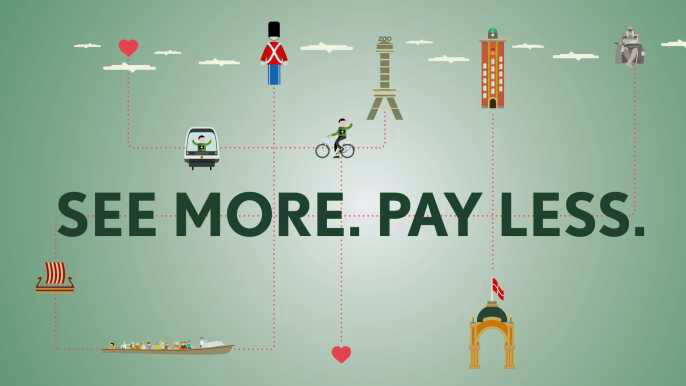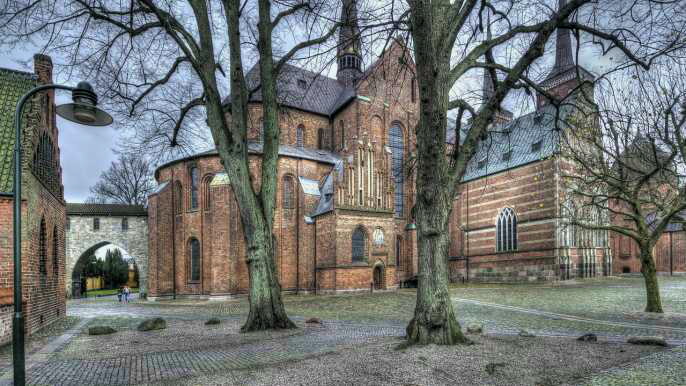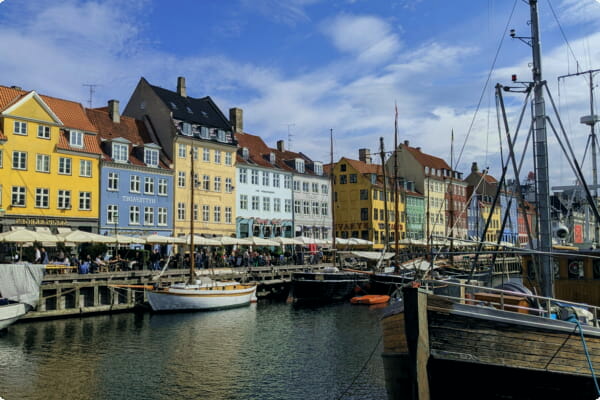Despite Denmark's small size, its cities are incredibly diverse. From the medieval castles in Helsingor to the modern architecture of Aalborg, there's something for every taste. The country's cities are filled with culture, history, and natural beauty. Whether you're looking for a family getaway or a romantic weekend away, Denmark has something for you.
Viborg
Located in the Central Jutland peninsula of Denmark, Viborg is the fourth largest city in the country. It is a great destination for outdoor activities, as it boasts a number of interesting sights and attractions. It is also home to a number of museums and is known for its quaint and historical old town.
In the Middle Ages, Viborg was a center of power. The city was close to the Lim Fjord, which was considered an important waterway in Jutland. The city was also home to several chapels and parish churches. During the Reformation, many political dramas took place in the city.
The most important site in Viborg is its cathedral. It is one of the largest granite churches in Northern Europe. It was originally built in 1140. It took several years to complete its construction.
The cathedral is also home to several sculptures and paintings. The cathedral's crypt houses caskets of the local nobility. The cathedral also has two tall towers.
Other notable churches in Viborg are the Grabrodre Klosterkirke and the Asmild Klosterkirke. The city is also home to the Skovgaard Museum. It features the works of the famous Skovgaard family. The museum is also home to a number of other artifacts.
Svendborg
Located in the Funen island in Denmark, Svendborg is the second largest city in the island. This charming town is known for its quaint look, unique culture, and rich history. This is one of the best cities in Denmark for tourists to visit. It is also known for its wide variety of vacation homes.
Svendborg is a popular destination for sailors and yachties. There is a rich history of sailing in this town. Its harbor is ideal for sailing, fishing, and island hopping. The area is also popular with birdwatchers. There are marked paths for hiking and horseback riding.
The city has a lively culture with festivals, arts, and cultural events. In the summer, Svendborg hosts a food festival, a music festival, and a sail-in cinema.
The city has a beautiful harbor and offers a number of restaurants and cafes. There are also some great shopping options. There are several boutiques, restaurants, and specialty shops on Gerritsgade, one of the oldest streets in Svendborg.
The city is home to the Naturama natural history museum. It features exhibits on the local fauna, fossils, insects, and mammals. It is free for kids.
Aalborg
Located in North Jutland, Aalborg is the fourth largest city in Denmark. The population of Aalborg is approximately 136,000. The city has a maritime climate with short, mild summers and moderately cold winters.
Aalborg is home to many museums and cultural attractions. The city is known for its medieval old town, Viking heritage, and classical sights. Several universities are also located in Aalborg. The city hosts a number of annual events, such as the International Documentary Festival.
Aalborg University, founded in 1974, has over 20,000 students. Aalborg is also home to the Royal School of Library and Information Science. This institution provides higher education in library and information science.
The city's waterfront has undergone a number of regeneration projects. It is now a popular spot for cruise ship tourists. It is also home to the Randers Zoo, where monkeys and other animals roam.
Aalborg also has a number of parks and beautiful squares. The waterfront is packed with college students when the weather is good. There are also many museums and outdoor attractions.
Helsingor
Located on the shores of the Oresund strait, Helsingor is a historic city in Eastern Denmark. It is home to one of the world's most famous castles, Kronborg Castle, as well as the medieval quarter.
Known for its rich history, Denmark has a number of fascinating cities that are sure to captivate visitors. These cities are known for their architecture, museums, and scenic spots. Whether you're a culture buff, an art fanatic, or a foodie, you'll be sure to find something to do in Denmark.
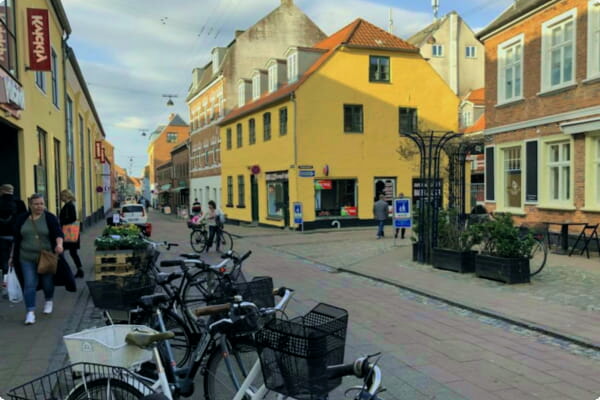
Helsingor has a medieval quarter with interesting buildings. During the Middle Ages, the city was a major economic center. In the 16th century, Carmelite monks established a hospital for seamen. The hospital was located near St. Mary's Church, which is considered one of the best-preserved monasteries in Scandinavia.
The Maritime Museum of Denmark in Helsingor features interactive exhibits and maritime history. You'll find 600 years of Danish history on the seas. You can also explore the museum's glass-walled culture yard, which hosts events throughout the year.
Fredericia
Founded in 1650 by the King of Denmark, Fredericia is a beautiful and thriving city in the heart of Denmark. This historical city is home to monuments and other historical attractions.
Fredericia is located along two coastlines. The Little Belt and the Vejle Fjord are both within a short distance of this small city. This makes it the perfect destination for outdoor activities.
A visit to Fredericia is ideal for those who enjoy nature. Visitors can enjoy hiking, sailing, and exploring the surrounding areas. There are also a number of museums and theaters. The city's history is well-represented by its monuments and memorial plaques.
The city has a number of shops, restaurants, and pubs. The town center is filled with specialty shops that focus on Danish design. Most streets are pedestrian-only.
You can visit Fredericia in a day, or enjoy a weekend trip. The best time to visit is in June or September. You can also visit the LEGO House, a popular tourist attraction. The Sculpture Park Billund is another top attraction.
Sonderborg
Located on the Als Sund waterway, Sonderborg, Denmark, is a charming seaside town with historic and modern feel. It is ideal for vacationers who want to explore nature and culture. It has plenty of activities, from hiking to cycling to water sports. The city is also close to the German border, making it a good place to visit.
The city is divided into two parts: the older part is on an island, while the newer part is on land. The old part has historical sites, such as the Grasten Palace, which is the summer residence of the Danish Royal family. The palace also has a public church and public gardens.
The city has a number of interesting sites, including a UNESCO World Heritage site. Its most interesting landmark is the Kronborg Slot.
The city is also home to the Lego Group headquarters. It has a number of historical buildings and monuments, including the Grasten Palace, which dates from 1759 and features public gardens.
The city is also home to several archaeological sites, including the Blomeskobbel forest, which contains Scandinavia's largest collection of burial mounds.
Danmarks Tekniske Museum
Located in a former iron foundry in Denmark, the Danmarks Tekniske Museum is a great place to learn about the history of industrial and mechanical inventions. Visitors can explore the museum's collection of steam engines, cars, and airplanes. The museum is open from 10am to 5pm Tuesday through Sunday.
The National Museum is Denmark's largest historical museum and is an excellent way to learn more about the country's culture. It houses a number of permanent collections as well as temporary exhibitions. The museum also has an extensive collection of Danish inventions. The Danish Patent Agency houses a unique collection of prototypes. The Aviation section contains more than 30 flying machines.
The Glyptotek Museum in Aalborg is another great attraction. The museum has an impressive collection of Danish artworks, including works by Berter Thorvaldsen (1770-1844).
The building that houses the museum is a quadrangle manor house that was constructed in the 16th century. Visitors can learn about the history of the area by taking a guided tour of the house. The museum's collection includes works by Danish masters as well as ancient Egyptian and Greek antiquities.
Kronborg Castle
Located at the narrowest point between Denmark and Sweden, Kronborg Castle is a UNESCO World Heritage Site. It was originally built to control ships passing into the Baltic Sea. These ships were required to pay transit fees, known as Sound Dues. This allowed the city to become wealthy.
Today, Kronborg Castle is an excellent place to learn about Denmark's maritime history. The National Maritime Museum is located in the former shipyard next to the castle. It contains relics from Denmark's conquests in Greenland, India, and West Indies.
Visitors can take a guided tour of the castle. The Great Hall, the banqueting hall of the castle, is the largest in Northern Europe. It features an impressive ballroom with 65 courses.
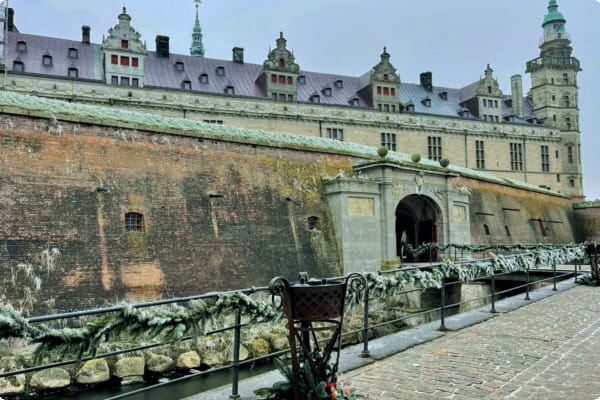
There are also several museums, including the Denmark's Technical Museum. The museum has a comprehensive collection of inventions and steam engines. There are also exhibits on industrial technology.
Visitors can also see the chapel, which features painted panels and the original altar. There is a museum dedicated to Holger the Dane, a legendary figure in Danish culture.


